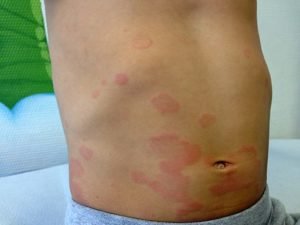Treatment of Urticaria (Hives)
 Most people will have a bout of hives in their lives. The causes of hives are many, including medications, infections, and physical inducers such as cold, heat, pressure, and sunlight, but for many cases a specific cause cannot be identified.
Most people will have a bout of hives in their lives. The causes of hives are many, including medications, infections, and physical inducers such as cold, heat, pressure, and sunlight, but for many cases a specific cause cannot be identified.
Urticaria is typically classified as acute (<6 weeks) or chronic (>6 weeks). For hives that last under six weeks, treatment with a second generation H1-antihistamine is usually sufficient. If hives persist, then a workup is warranted, including screening for autoimmune disease, thyroid dysfunction, and parasitic disease.
Are antihistamines good for hives?
If standard doses of a second generation H1-antihistamine (e.g. cetirizine, loratidine, desloratidine, fexofenadine and levocetirizine) are ineffective, increased dosage up to 4-times the normal dose might be attempted.
If control is still not obtained, an additional second generation H1-antihistamine, H2-blocker (e.g. cimetidine, famotidine, nizatidine and ranitidine), leukotriene receptor antagonist (e.g. montelukast), or first generation H1-antihistamine (e.g. diphenhydramine ) might be added.
Omalizumab for hives
The next level of treatment for hives is the antibody omalizumab (trade name Xolair), which is injected every four weeks.
Are Corticosteroids good for treating hives?
Systemic corticosteroids, such as prednisone, can be used short-term to control hives (e.g. 10-14 day course), but should not be used long-term due to the risk of side-effects.
Are there other treatments for hives?
There are many other treatments that are sometimes used for hives, but they are not fist-line treatments. Consult with your dermatologist for further treatment.
Call 973-763-7546 to schedule a consultation for urticaria or hives today.

